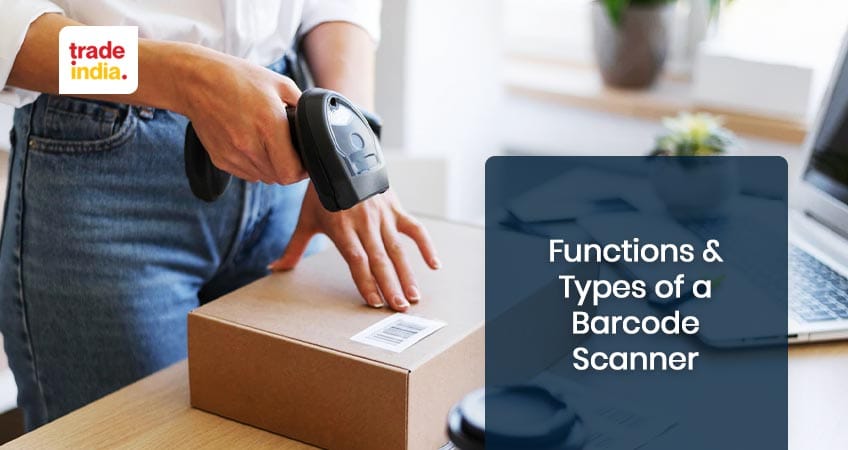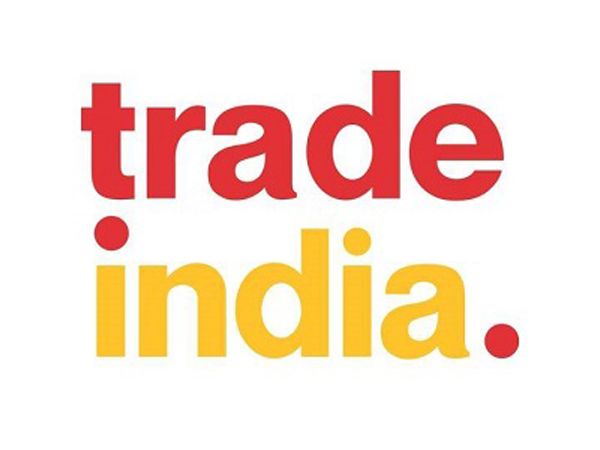Barcode Scanner: Definition, Types & Functions

Who would imagine that something as innocent as a barcode scanner could be so multi-functional? Read on to know how the difference that a barcode scanner can bring to your life.
A tool called Barcode Scanner is a handy electronic device developed for inventory management. It helps companies and stores track and store vital data about their products that range from a handful to several million.
These days, the functions of the barcode scanner go far beyond picking up data from barcodes to a medium that translates the data into a readable and actionable form. It is chiefly used to speed up financial transactions. Barcode scanners manufacturers are making better handheld devices with people-friendly technologies that make scanning a dream.
Origin of Barcode Scanning
George Laurer, an electrical engineer with IBM, was the first to develop the barcode or the Universal Product Code (UPC). He also developed a scanner that could digitally read codes. In June 1974, the first barcode scanner was installed at a supermarket in Troy, Ohio. The first product to be put through barcode scanning was Wrigley's Gum.
How Do Barcode Scanners Work?
The barcode scanner is a handheld device that works as an input device. It works with light beams that focus on the barcode label to be read. The scanner digitally reads and scans the product data held within the barcode from the reflected light. The information received from the scanner is then transferred to the computer. Here, it is compared against the database of barcodes to verify the product’s unique identity as given in the barcode label.
Types of Barcode Scanners
There are a few different types of barcode scanners. These are:
#1. Pen-Type Readers
Pen-type readers have an inbuilt photodiode and a light source near the pen’s tip. To read the code, you would have to hold the pen and move its tip across all the code bars at a constant speed. From the photodiode, you can get the measure of the light’s intensity reflected from the source of the light as the pen tip moves from bar to bar.
It creates a waveform to measure the bars’ width and the spaces between two bars. Whereas the dark bars absorb light from the light source, the white areas reflect it so that the voltage waveform that results represents the bar and the spaces between bars. The scanner reads this pattern just like a Morse code is read.
#2. Laser Scanners
A laser scanner can either be stationary or handheld. Unlike a pen-type scanner, it doesn’t need to be near the barcodes to read them. With the help of lenses and mirrors, barcodes read up to a maximum distance of 24”. Each second, a laser scanner can perform 500 scans.
#3. Slot Scanner
A slot scanner stays stationary while the barcoded item is pulled physically through the slot. They are ideal for scanning barcodes on identification cards.
#4. CCD Barcode Scanner
A CCD scanner does better in its read range than a pen-type scanner. It is perfect for use in retail stores. CCD scanners have an inherent "gun" kind of interface that should remain an inch away from the barcoded item. After running the scanner, one must take a few readings to rule out any chance of erroneous readings. However, for all its capabilities, the CCD barcode scanner can’t read a barcode wider than the width of its interface.
#5. Image or Camera Scanner
An image scanner, or camera reader, has an inbuilt video camera that captures the barcode images. It then works with state-of-the-art digital image processing technology to interpret the barcode. Even if the barcode is about nine inches away, it can easily read it.
Functions of Barcode Scanners
The functions of barcode scanners include:
#1. Barcode Scanners Make Code Reading Easy
Barcodes hold product information within their alphanumeric characters and bars. This enables the scanner to read it faster at a store or track inventory.
#2. Barcode Scanners are Accurate
Barcode scanners read the code quickly, easily, and accurately.
#3. Businesses Can Expedite Inventory Management
Barcode scanners work fast, so they are preferred for activities like monitoring inventories, sending files and receiving them, etc., as they negate the possibility of human errors.
#4. Warehouse Management Is Easier
The tedious job of inventory maintenance is now made easy with warehouse management done with barcode scanners. Barcodes work to track inventories and stocks at several locations within a network. With drones being used variously, it’s not surprising that warehouses also employ them to figure out their inventory. This makes warehouse management becomes more efficient, safer, and easier.
#5. Social Media Information
Users of social media apps use apps on their smartphones to scan barcodes and QRs of all kinds of products ranging from clothes, shoes, food, and much more. They get valuable information when the code is interpreted.
Best Barcode Manufacturers in India
The best barcode manufacturers in India are Pegasus, TVSE, Livato, Honeywell, Retsol, and iBall. Their barcode scanner machine models are listed below:
- Pegasus PS1146A 1D Laser Barcode Scanner
- Honeywell 1250G Barcode Scanner
- Livato Scanmore Laser Barcode Scanner
- Retsol Barcode Scanner
- TVSE BSC 101 Barcode Scanner
- iBall Barcode Scanner
A good barcode scanner price would be about Rs. 1231 which could go up to Rs. 3374/-.
Barcode Scanner Buying Guide: 5 Basic Parameters
Buying a sensitive gadget like a barcode scanner can’t be done based on aesthetics. You need to have its features and specs at your fingertips. So, here we give you the five parameters on which you can buy yourself a good barcode scanner.
#1. Check That Your Barcode Scanner is Rugged
Whether the floor of your warehouse or offline store is naked or whether you cover it with a carpet, it’s common for barcode scanners to slip out of your hand and fall to the floor. In such a scenario, can your barcode scanner take the hit? Or will it fall to pieces? Before you zero in on any scanner, check its ruggedness.
#2. Is Your Air Clean?
Perhaps your warehouse is dusty. Could it have small dust particles all over the place? If you’ve answered yes, ensure that you check the Ingress Protection (IP) level of the barcode you’re considering. The IP rating should be a minimum of 68 to be on your shortlist.
#3. Choose a Barcode Scanner Depending on Your Lighting
If your warehouse has low lighting, you’ll need a low-light barcode scanner. But if you want to work in bright sunshine or a brightly lit warehouse, you’ll need a scanner of a high brightness level. No matter what the lighting conditions are in your warehouse while choosing a barcode scanner, ask the seller for a demo in your warehouse.
#4. Is the Keyboard Large Enough for You to Type?
If you’re going to be typing in numbers or other details, ensure that your barcode scanner has a large enough keyboard for you to use comfortably.
#5. Type of Barcodes to Scan
If you scan barcodes, check out the code type and the distance at which you can scan your items. You can do any kind of barcode scanning with 2D imaging, but for 1D barcodes, it’s best to go with linear barcode scan machines.
If you’re going to scan from a great distance, go in for scanner with Advanced Long Range. With this, you can scan from about 50 feet away.
Conclusion
Businesses today cannot do without efficient barcoding scanners, so they are essential to have. To fuel this demand, there are several barcode scanners manufacturers, each offering a more sophisticated product. This helps industries across the board in inventory management, accounts, and other aspects of the business.
We hope this blog is full of useful information to run your business smoothly and efficiently. If you have any comments or suggestions, please drop them in the comment box given below.
FAQs: Barcode Scanner
Q. How does a barcode scanner work?
Ans. When a barcode scanner is placed anywhere near the barcode or a maximum of 24” away from it, it can pick up the coded information lodged in the black and white bars. The scanner then sends this information to the computer.
Q. Do barcodes need special software to work?
Ans. No, they do not need any specialized software to work optimally. They will work as a keyboard does and your computer will recognize them as an input device.
Q. What is the range of a cordless barcode scanner?
Ans. Though this varies according to the model, a cordless barcode scanner can read from 33 feet away.
Q. Do barcode scanners read QR codes?
Ans. Yes, 2-D barcode scanners can read QR Codes. They capture the picture and scan the barcode after reading the QR code. Then, with the help of a decoding algorithm, the scanner can read the data contained in the QR code.
Q. Can I read a barcode from a computer screen?
Ans. To facilitate this, you will need a 2D imaging scanner. This device processes images rather than using reflected light.
Q. Can I scan a barcode online?
Ans. You can use a barcode scanner online with your smartphone’s camera. All you need to do is to scan the QR code. Next, scan the datamatrix and 2D and 1D barcode types.
